
New paper in Imaging Neuroscience by Ammar I. Marvi, Nancy G. Kanwisher, et al:
An efficient multifunction fMRI localizer for high-level visual, auditory, and cognitive regions in humans
doi.org/10.1162/IMAG...
@lenastroh.bsky.social
Neuroscientist interested in neuroplasticity, blindness, deafness, and Sign Language

New paper in Imaging Neuroscience by Ammar I. Marvi, Nancy G. Kanwisher, et al:
An efficient multifunction fMRI localizer for high-level visual, auditory, and cognitive regions in humans
doi.org/10.1162/IMAG...

Brain–body states as a link between cardiovascular and mental health
doi.org/10.1016/j.ti...
#neuroskyence

When is it appropriate to deviate from a pre-registration, and how should this be done? 🧐
Join us to find out from Daniël Lakens @lakens.bsky.social at the next ReproducibiliTea!
October 28, 1pm GMT.
Sign up: www.eventbrite.co.uk/e/when-and-h...
@tabeasch.bsky.social @reproducibilitea.org

By utilizing the visual backward masking paradigm, this study aimed to disentangle the contributions of feedforward and recurrent processing, revealing that recurrent processing significantly shapes the object representations across the ventral visual stream.
journals.plos.org/plosbiology/...

How disabled scientists spice up science, technology, and everywhere and all at once. Powerful preprint by the brilliant @jennychenlu.bsky.social & @sheilaxu.bsky.social on the ethics of hiring deaf and disabled people in STEM.
Read here: tinyurl.com/52kceckw
Functional organization of the human visual system at birth and across late gestation https://www.biorxiv.org/content/10.1101/2025.09.22.677834v1
22.09.2025 23:16 — 👍 6 🔁 7 💬 0 📌 0The human brain mechanisms of afterimages: From networks to cortical layers https://www.biorxiv.org/content/10.1101/2025.08.30.673266v1
05.09.2025 01:15 — 👍 8 🔁 3 💬 0 📌 0🚨 Very excited to have this manuscript with Haydée García-Lázaro out in the world! With psychophysics and #EEG decoding, we show how echoacoustic evidence accumulates over multiple click-echo presentations. The first temporally resolved account of the brain doing #echolocation in blind humans. 🦇🔊
31.08.2025 21:22 — 👍 8 🔁 3 💬 1 📌 1
End of August means ECVP! This year, I am here (in beautiful Mainz) with a special mission - to find postdocs who will join us in (equally beautiful) Krakow, PL! Drop me a DM if you are interested!
@ecvp.bsky.social

Excited to share our (Flo Martinez Addiego @yuqiliu1179.bsky.social @culhamari-lab.bsky.social) paper, now published in PNAS!
www.pnas.org/doi/10.1073/...
(or an easier read on medicine.georgetown.edu/news-release... )
Now out in @natneuro.nature.com
What happens to the brain’s body map when a body-part is removed?
Scanning patients before and up to 5 yrs after arm amputation, we discovered the brain’s body map is strikingly preserved despite amputation
www.nature.com/articles/s41593-025-02037-7
🧵1/18

Arrangement of raw data, semantic, and instance segmentation of human corpus callosum fibers, acquired by transmission electron microscopy. The data used for this image were generated by Maria Morozova, David Edler von der Planitz, and Philip Ruthig. All cover Art was created by the MPI for Human Cognitive and Brain Sciences Graphics department (Andrea Sandmann)
#Myelination enables faster signal propagation in the brain, but takes more energy & space. @philipruthig.bsky.social &co reveal how short- & long-range #WhiteMatter fibers differ, showing how these variations affect neural communication & processing efficiency @plosbiology.org 🧪 plos.io/4mq5tOy
21.08.2025 08:31 — 👍 9 🔁 2 💬 0 📌 1
PsyArXiv is seeking new moderators to help combat an increase in AI submissions! If you've ever posted a preprint to PsyArXiv, please consider joining. Minimum commitment 1h/month, there's a training session this Monday @ 1pm ET. More info here: forms.gle/9LB1rEtxHAeZ... #PsychSciSky
15.08.2025 17:31 — 👍 75 🔁 91 💬 0 📌 14Disentangling the influences of pre- and postnatal periods on human cortical microstructure https://www.biorxiv.org/content/10.1101/2025.08.12.669812v1
13.08.2025 08:15 — 👍 3 🔁 3 💬 0 📌 0Thanks to all (co)authors & reviewers for their contribution to this study on #layer specific changes in #sensory #cortex across the #lifespan in #humans & #mice now out in @natneuro.nature.com Here is a short summary of our findings 1/6
11.08.2025 14:29 — 👍 41 🔁 19 💬 1 📌 1On Friday, niklasmuller.bsky.social shows that estimating population receptive fields (pRF) using DNN feature maps but without assuming a Gaussian pRF shape yields better predictions of THINGS ephys data, uncovering surprising pRF geometries! 2025.ccneuro.org/poster/?id=1... Poster C105, 14:00-17:00
10.08.2025 15:20 — 👍 7 🔁 3 💬 1 📌 0This is wild. Dirt-cheap, un-patentable lithium supplements might just reverse Alzheimer's (in mice, admittedly...).
11.08.2025 07:30 — 👍 8 🔁 2 💬 1 📌 0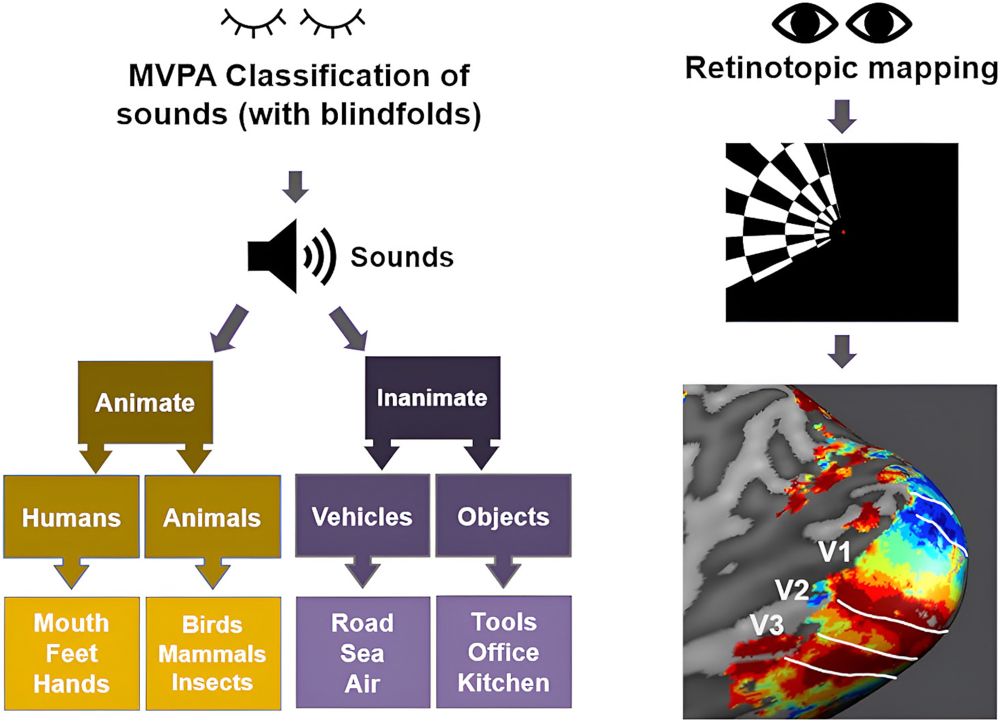
fMRI experimental design and procedure
Decoding semantic sound categories in early visual cortex academic.oup.com/cercor/artic... "semantic and categorical sound information is represented in early visual cortex, potentially used to predict visual input"; #neuroscience
03.08.2025 08:25 — 👍 9 🔁 4 💬 1 📌 0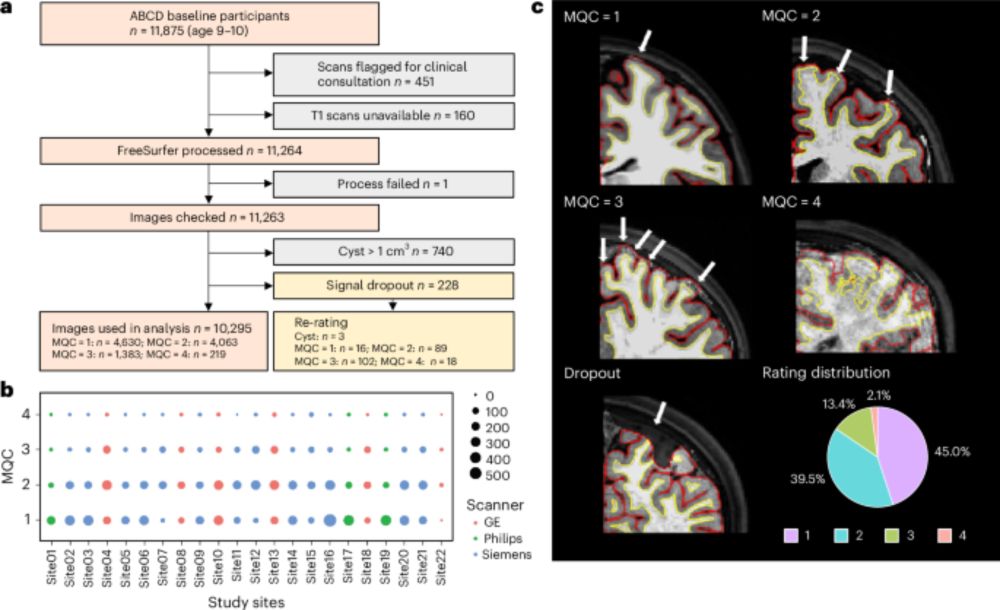
Analysis of >11,000 pediatric MRI scans suggests that suboptimal image quality may introduce bias in cortical thickness and area estimates in over half the cases 🤔🧐
www.nature.com/articles/s41...

I’m happy to share that our manuscript on the cortical depth-dependency of the GE- and SE-BOLD point spread function at 7 Tesla is now available on bioRxiv!
www.biorxiv.org/content/10.1...
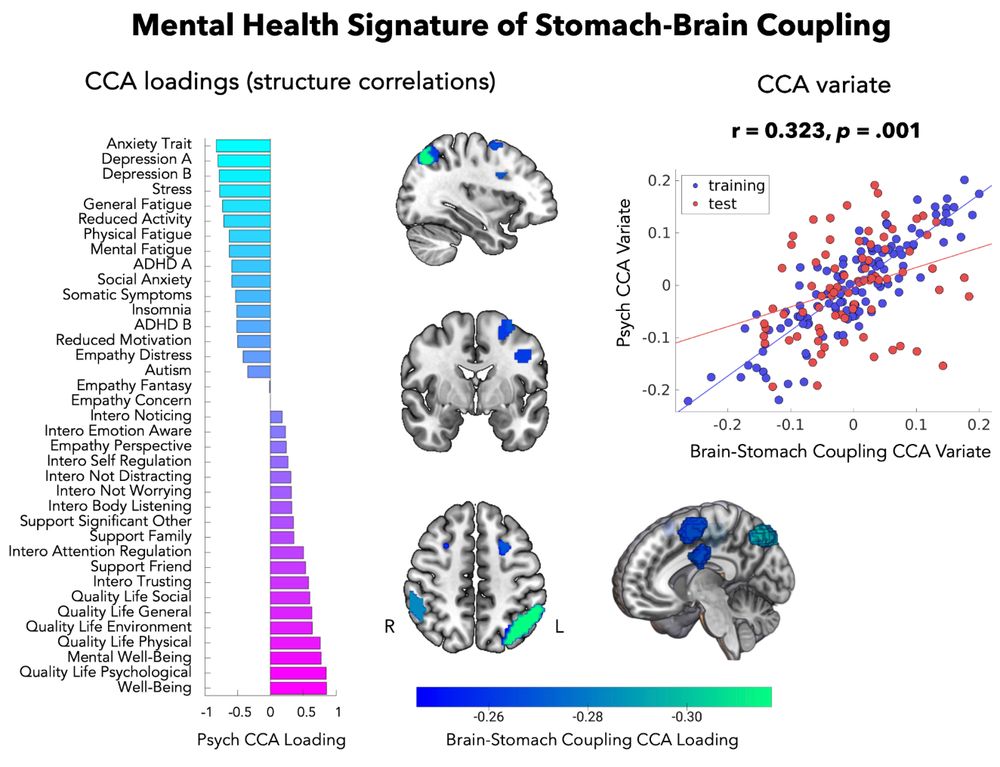
While many believe being ‘more in tune with your body’ improves mental health, we surprisingly found the opposite: worse mental health (higher anxiety, depression, stress, fatigue & reduced well-being)—with stronger stomach-brain connections.
30.07.2025 09:51 — 👍 10 🔁 3 💬 2 📌 1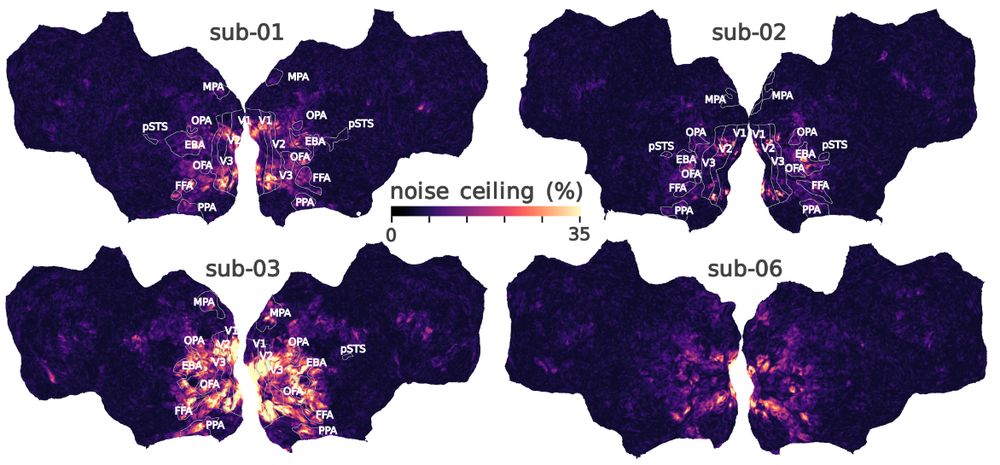
four brain maps showing noise ceiling estimates in response to image presentation
New CNeuroMod-THINGS open-access fMRI dataset: 4 participants · ~4 000 images (720 categories) each shown 3× (12k trials per subject)· individual functional localizers & NSD-inspired QC . Preprint: arxiv.org/abs/2507.09024 Congrats Marie St-Laurent and @martinhebart.bsky.social !!
30.07.2025 01:57 — 👍 35 🔁 17 💬 1 📌 0
6/11 One of our most striking (and unexpected) findings was that an individual child’s brain functional connectivity is more similar to their childhood peers than adults are to other adults. That is, children showed less inter-individual variability than adults.
28.07.2025 21:53 — 👍 5 🔁 1 💬 1 📌 0
1/11 Very excited to say that our preprint, Precision functional mapping reveals less inter-individual variability in the child vs. adult human brain, is up on biorxiv!
www.biorxiv.org/content/10.1...
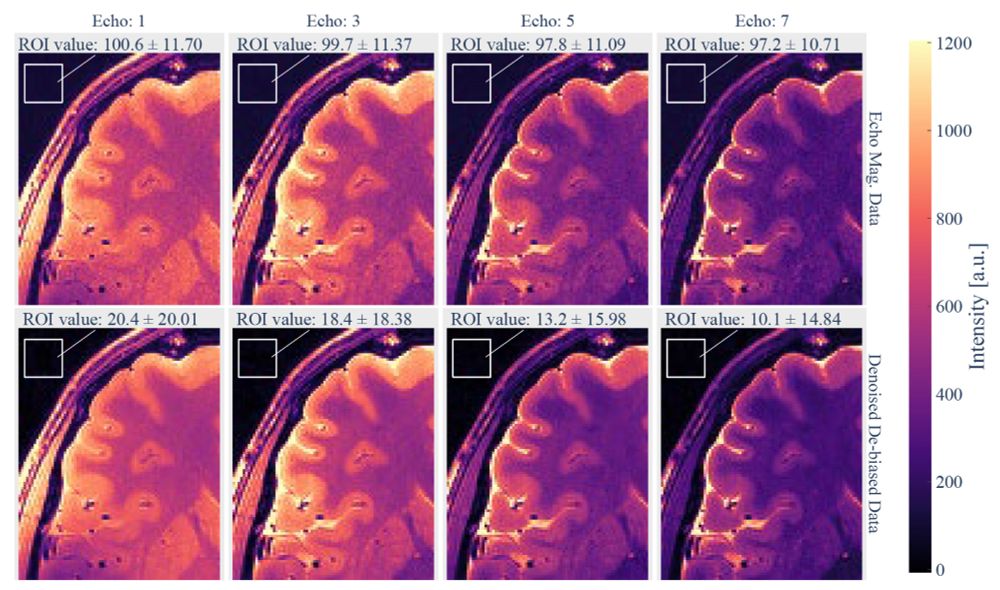
New paper in Imaging Neuroscience by Jochen Schmidt, Nikolaus Weiskopf, et al:
High-resolution quantitative T2 mapping of the human brain at 7 T using a multi-echo spin-echo sequence and dictionary-based modeling
doi.org/10.1162/IMAG...
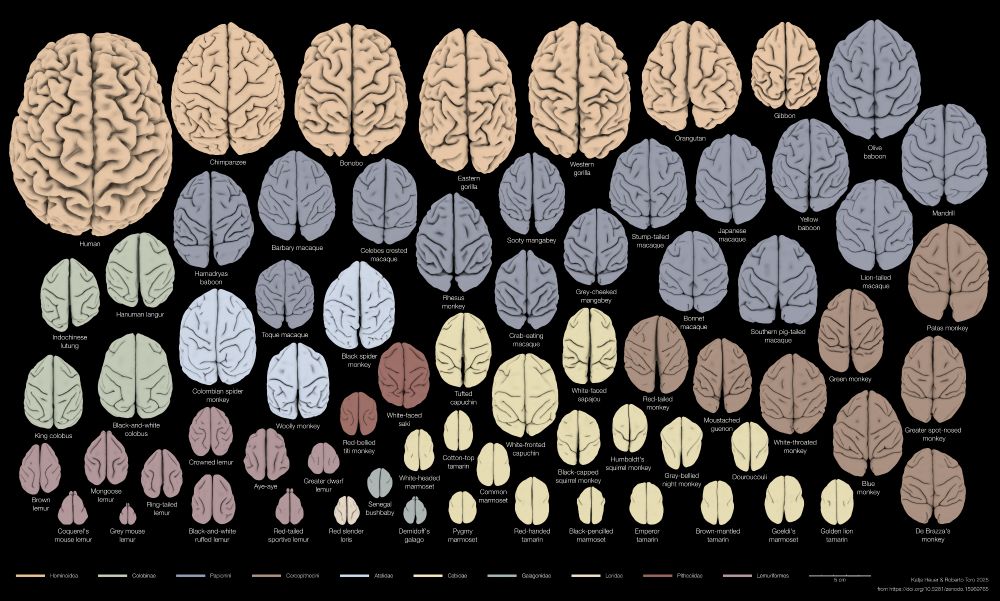
Brain Surfaces of 70 primate species
1
To predict the behaviour of a primate, would you rather base your guess on a closely related species or one with a similar brain shape? We looked at brains & behaviours of 70 species, you’ll be surprised!
🧵Thread on our new preprint with @r3rt0.bsky.social , doi.org/10.1101/2025...
Visual Word Form Area demonstrates individual and task-agnostic consistency but inter-individual variability https://www.biorxiv.org/content/10.1101/2025.07.23.666206v1
27.07.2025 11:15 — 👍 4 🔁 3 💬 0 📌 0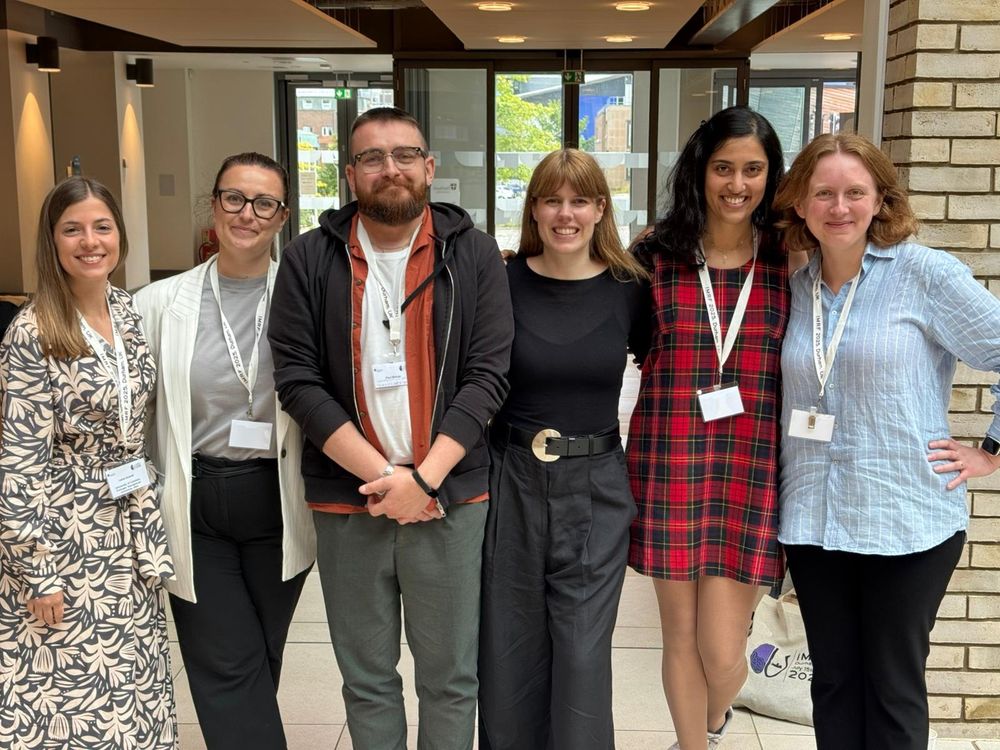
What a fantastic time at IMRF! 🎉
Huge thanks to the brilliant speakers for making our symposium on “Blindness as a Window into Brain Organisation” a big success! Big thanks to the organisers and the scientific community for this stellar event! Great to see so many friends and colleagues! #IMRF2025
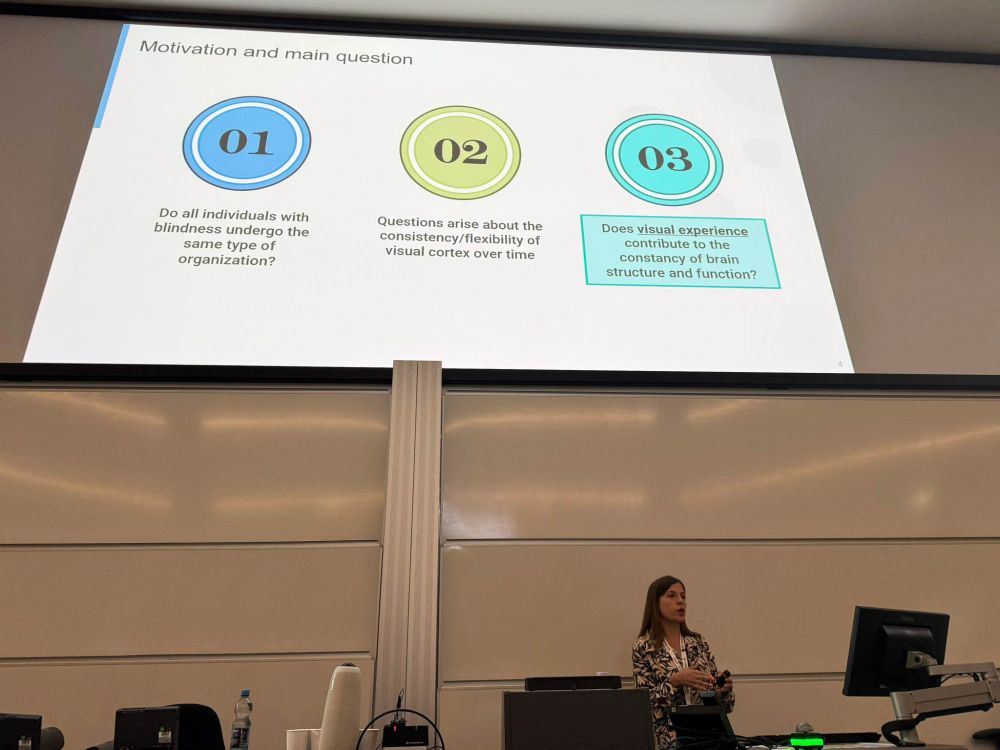
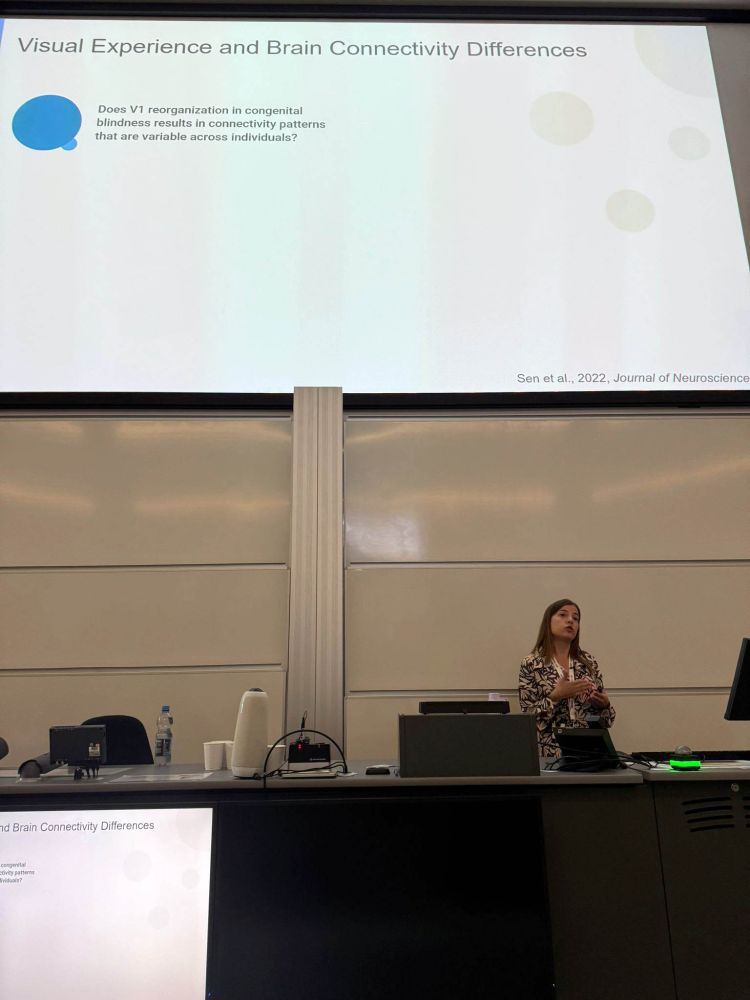
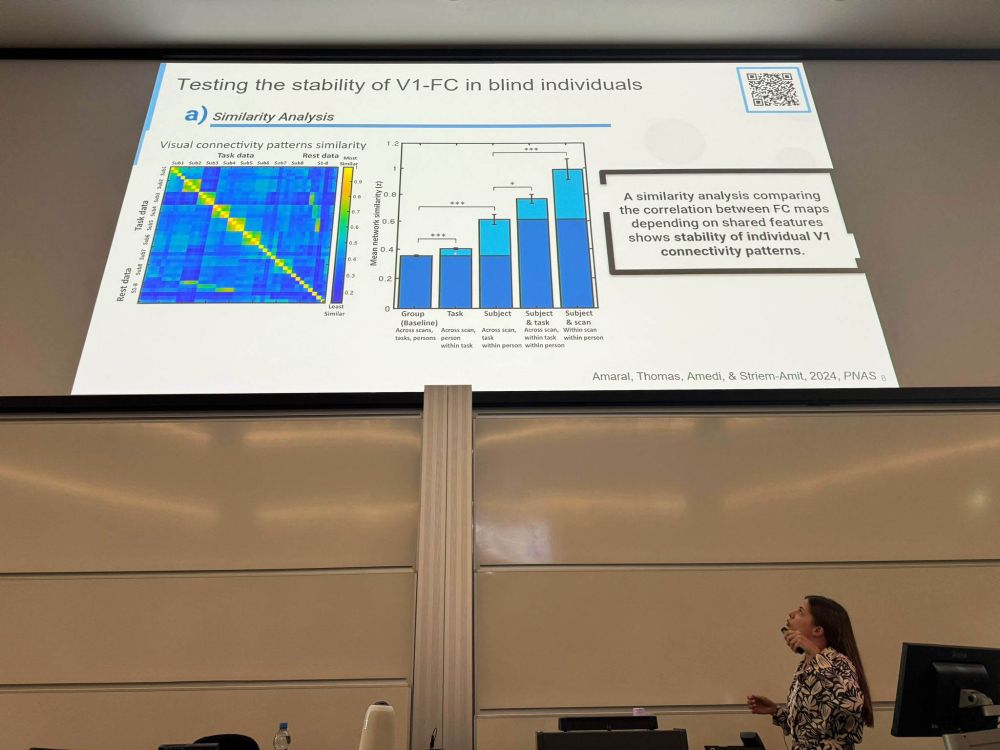
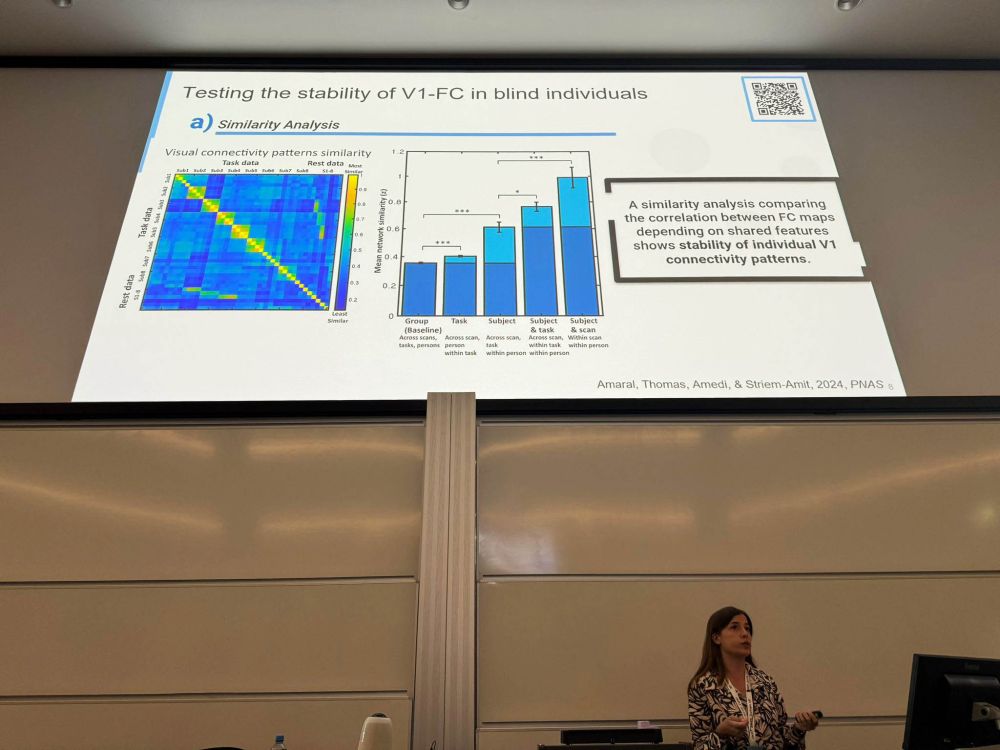
Lénia Amaral presented her work at the @imrf.bsky.social!
Her talk, “Stable, but unique: individualized connectivity in the blind V1 over time” reflects her postdoctoral work with @striemamit.bsky.social at the SAMP Lab, Georgetown University.
@durham-university.bsky.social
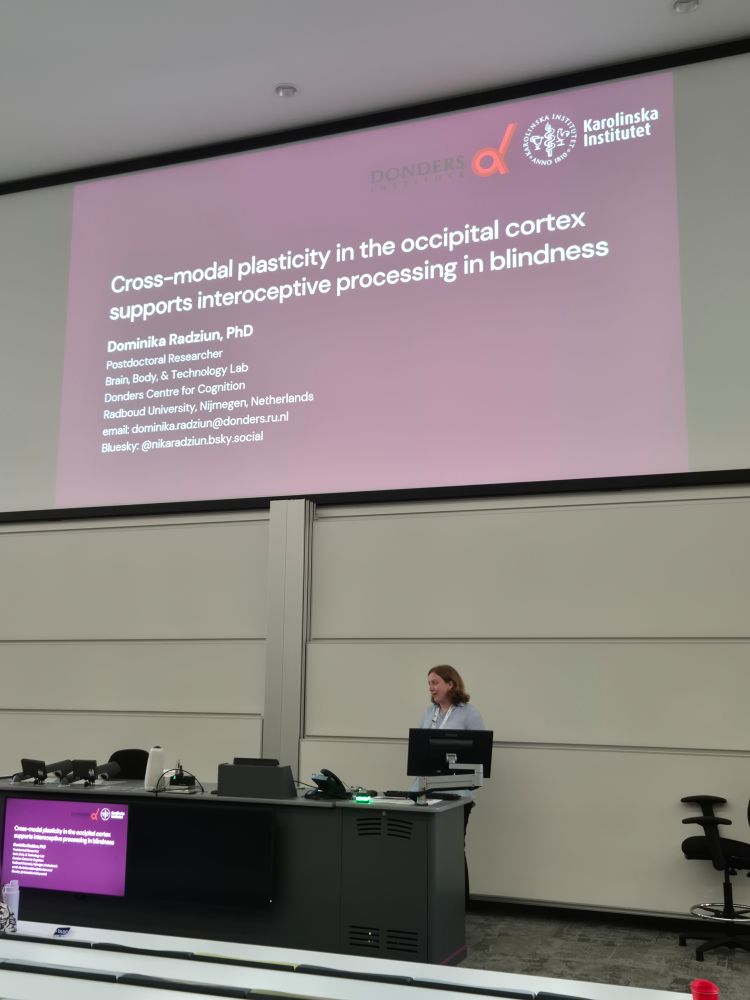
Today @nikaradziun.bsky.social gave a fantastic talk on cardiac interoception processing in the blind as part of the symposium "Blindness as a window into fundamental principles of brain organisation" #IMRF2025 @imrf.bsky.social
16.07.2025 13:16 — 👍 17 🔁 5 💬 0 📌 0